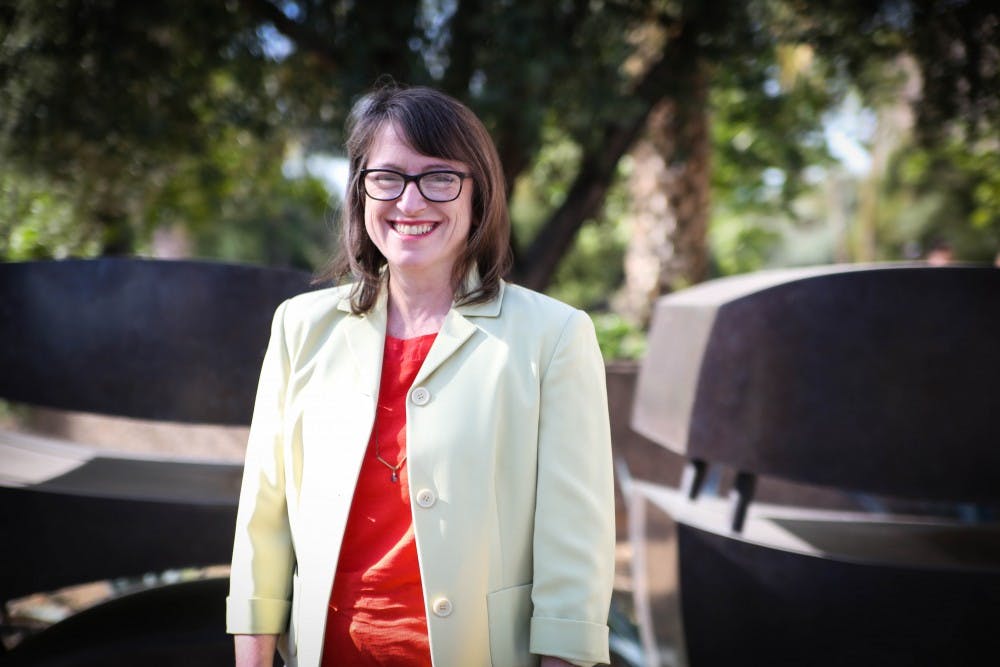Arts education begins with a simple belief: It's up to the artists of today to teach and inspire the artists of tomorrow.
For lifelong arts advocate Linda Essig, that means not only teaching at the university level, but supporting arts entrepreneurship from the ground up.
Essig is an ASU professor and the director of e
Essig herself is no stranger to the performing arts world. She's literally written a book on it — several, in fact.
Her passion for the arts emerged from living in one of the richest cultural hubs of the world,
"I fell in love with theater," Essig said. "The aspect of 'it takes a village to make a show.' You don't have to be an actor to be involved in the theater, and I got great joy out of working in these collaborative environments of theater production, and working with groups of people toward a common goal."
She said her first personal experience in theater was a gender-swapped production of "Twelfth Night" put on at her all-girls high school. She played Antonio in the show, but found acting wasn't her forte.
It did, however, spark what turned out to be a much more vibrant passion. When she didn't get cast in her school's production of "The Skin of Our Teeth," Essig instead tried her hand at set and lighting design.
She said that was where her skills were really put to good use.
"Lighting design was this interesting combination of theater, visual art and math," Essig said. "I really started to enjoy that. I did a lot in high school, and I got an internship at a professional theater, so I decided to skip eleventh grade and go right into NYU's design program."
She attended
However, Essig said living and working in
"Working in the professional theater anywhere is hard," she said. "In some ways it's easier in
She lived and taught in
Now, Essig has turned her focus from lighting design to arts entrepreneurship, particularly within the local community. In 2010 she stepped down as director of the
Essig currently heads the Pave Program in Arts Entrepreneurship, which was founded in 2006 to encourage students to take their ideas and experiences beyond the classroom. Its mission is to "pave the way to the future of the arts by investing in student innovation and creativity, supporting arts entrepreneurship education and undertaking entrepreneurial activities and research," according to its website.
Essig said the goal of the program is to equip students to handle the business side of the arts, so they can use their ideas and work to create lasting ventures.
"It's driven by this idea that artists need to understand how to craft sustainable creative practice," she said. "Over the years, the incubator has become much more robust. We've helped almost 40 student creative teams launch businesses."
Each year, the program selects a handful of student-created project pitches to help develop into actual arts programs. This year's Arts Venture Incubator included The Black Box Dance Theatre Collective, Catalyst Collective, Kerfuffle and Interactive Tango Milonga.
Once applicants are admitted into the Pave Program, Essig works with them in four eight-hour intensive sessions that cover marketing, budgeting, legal issues and the business side of the arts.
For students looking to pursue their own arts-related ventures, that level of training can be invaluable.
Phil Weaver-Stoesz is a second-year MFA student in the Herberger Institute's directing program. He's also the creative director of the Catalyst Collective, one of the programs that was selected to receive funding through the Arts Venture Incubator.
Weaver-Stoesz said the theater company changed drastically as a result of Essig's advice and teaching.
"My biggest problem as a leader of businesses is that I get very philosophical and hand-wavy with grandiose ideas," he said. "Linda so expertly takes that energy, and tries to funnel it into specific deliverables, audiences, products. During its time in the Pave Program, the Catalyst Collective basically transformed from a very idealistic idea into an actual business model. It still has a lot of specifying to do, but Linda was incredible at sort of dissecting all of the ideas that we had and making them more specific."
Stephani Etheridge Woodson is the interim director for the
"She is generous and kind, and incredibly thoughtful about long-term kinds of issues," Woodson said. "Like how we help our students learn how to curate their careers so they can make a living as an artist, and how our curriculum prepares people. ... The idea of 'what are your skills worth, what are ways you can practice your art that allow you to support yourself?' Those things are key to the 21st century."
In addition to her work at ASU, Essig runs a popular Twitter account, as well as a blog on "arts entrepreneurship, arts policy, higher education in the arts and, occasionally, cooking," according to her faculty profile.
Related links:
David Saar on the importance of theater for youth
Tracy Liz Miller on empowering women in theater
Reach the reporter at skylar.mason@asu.edu or follow @skylarmason42 on Twitter.
Like The State Press on Facebook and follow @statepress on Twitter.




